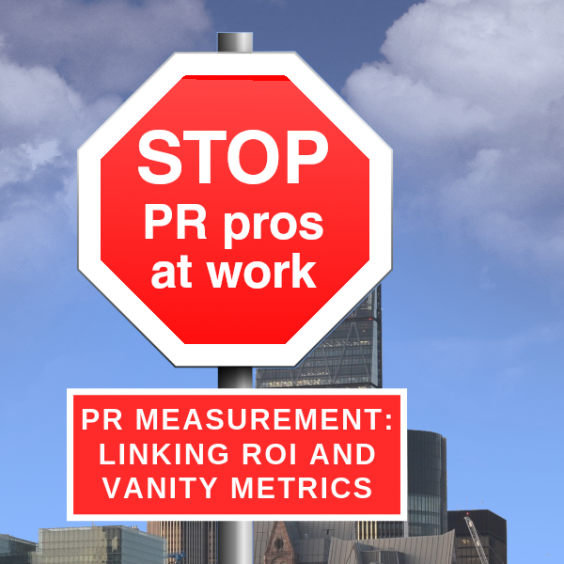There’s no doubt that the question ‘how can I generate b2b sales leads online?’ has jumped up the agenda for PR, marketing and sales teams in recent times. If you’re in an in-house role like head of comms, CMO or sales director, it helps to understand the b2b lead generation process and key tactics for delivering online b2b leads. In this blog, I’ll try to uncover some answers by looking at:
- How b2b and b2c sales differ
- What counts as a b2b sales lead
- The process for driving b2b lead generation
- Common issues that in-house PR, marketing and sales teams come up against
- How these teams can work together to deliver leads
Let’s start with some of the basics…
How do b2b sales differ from b2c sales?
A b2b sale is wholly different from a b2c sale in many ways:
- Longer sales cycle – a b2b sale often has a significantly longer cycle. According to CSO Insight, just over 28% of b2b companies had a 4–6-month sales cycle for new customers and around 18% took over a year. It isn’t uncommon to see a 12-18 month gap between prospect and sale.
- More transactional, less instinctive – while every sale involves emotion (more about this later), b2b sales tend to be more logical. Buyers make decisions based on benefits, features and facts rather than on pure instinct. You’re buying on behalf of your company, so will weigh up the cost of getting it wrong vs taking a chance on something new.
- More money and people involved – except for high-end goods like cars, houses and art, many b2c purchases won’t break the bank like b2b ones. Of course, some b2b sales are small, but many purchases run into thousands, millions and beyond. That’s especially true for b2b technology purchases. For that reason, there is often a variety of stakeholders involved in the decision-making process. For a technology sale, this will generally include the head of IT, CIO, financial director and procurement teams, all of whom will have a role in approving or denying the sale.
MQL vs SQL
Not all b2b sales leads are made equal. If you work in a sales, PR or marketing team, you will undoubtedly have seen differing perspectives on what constitutes a lead. In most companies, leads tend to be separated into MQL (Marketing Qualified Leads) or SQL (Sales Qualified Leads).
An MQL is a lead deemed strong enough by the PR and marketing teams – generally, it’s someone who has downloaded a piece of content, taken up an offer or interacted with marketing content. However, they won’t yet have entered the sales process and the sales team won’t yet have got involved.
An SQL (Sales Qualified Lead) is a lead your sales team has qualified as a potential customer. Companies often have scoring systems to determine an SQL, which include factors like the size of the company, sector, location, and buying signals. An SQL goes into your sales funnel for the sales team to progress.
So, how do you create an online b2b lead generation process that works for PR, marketing and b2b sales team?
Don’t work in silos
The first point to think about is the importance of working as ‘one team’, which becomes especially important if teams are working remotely, as many do today.
A challenge to this is that tension can sometimes build between the PR, marketing and sales teams. This often happens when each team feels their contribution isn’t valued or the other team isn’t fulfilling their end of the bargain. I’ve even seen teams where sales and marketing are actively working against each other. B2b sales leads happen when the structures are as integrated as possible. Marketing/PR teams need to feel that the MQLs they pass on are being acted on and sales needs to feel that marketing is helping to build the right sales pipeline.
For that reason, you increasingly see mid-sized to enterprise organisations merge sales, PR and marketing functions under the stewardship of the chief revenue officer (CRO) or chief growth officer (CGO). The CRO is responsible for anything that generates revenue. Teams like marketing/ PR, sales, channel sales and customer success report into them. CROs are increasingly replacing chief marketing officers (CMO) to build more connected and revenue-focused sales and marketing teams. But even if you can’t restructure, taking simple steps like agreeing upfront what makes an SQL and working together to set lead and revenue targets can make a big difference. It’s a great way to integrate teams so both sides see value from their efforts.
And let’s face it, right now is a good time for everyone to reevaluate how we work together! Team structures and old ways of operating may change for some b2b companies. Get everyone together for regular (video) calls to make sure you are working effectively and pulling in the same direction.
Put good content at the heart of b2b leads
Content has long played a key role in how to influence and engage audiences and drive b2b sales opportunities. In today’s digital world where sales teams won’t always be able to meet prospects in person, online content matters even more. There are lots of ways to use content, but this diagram outlines how we do it. I’ll take you through it in more detail below.
1. Define your b2b target audience
Whether you’re selling a b2b product or service, it all starts with the audience you’re trying to reach. As I’m sure you’ve read, understanding the personas of your different audiences are important. They help you hone down to who your customers are and what makes them tick.
Typically, a persona includes information around:
- Demographics – eg age, education level and family details
- company sector
- job title
- goals
- motivations
- the challenges/ pain points they face
Your sales and marketing teams should work together to decide exactly which companies to target. This is often described as an account-based marketing (ABM) approach – targeting effort at key prospects and targets. Deciding on your top 100/200 target list together means you are more likely to deliver the leads that sales really values.
We spend a lot of time defining what companies are on our client’s wish lists. For some companies, there will be a healthy pipeline in a CRM system you can use to build that list. For others, it could involve pulling together prospect lists kept on Excels sheets on computers. And for some, it will be working together to create that list from scratch based on factors like company size, sector or location of the target.
2. Think about the sales cycle
Driving sales leads is all about getting the right content, to the right audience, at the right time. PR, marketing and sales will need to work together as b2b leads move through the purchase cycle. Not all companies and products start at the same stage, so your marketing campaign goals may differ for different brands and products. If you’re a new company or entering into a new sector, awareness and brand positioning will be important to you. But if you’re a big brand that sells an established product, awareness isn’t likely to be the key goal. Make sure you sit down together and agree the goal of the campaigns upfront.
The table below outlines which teams typically get involved in each stage and the type of content that gets used. The aim is to nuture prospects along the buyer journey from awareness to decision and beyond. You are using content to convince them to first show some interest, for example, leave their details for an eBook. And then push those prospects towards points where they show stronger signals like engaging with product-focused content or asking for a demo.
As a general rule, content can become more product-focused as you move down the sales cycle. Typically, educational/ thought leadership content is used at the awareness stage. It’s often best for sales to let the PR and marketing teams drive awareness content. When people don’t know who you are or that they even need your service, they don’t want to be sold to. Sales teams shouldn’t forget that prospects will buy into a business’ story or knowledge before they buy their products. PR-driven educational content like media articles builds trust. At the early stages of the cycle, product features aren’t the be-all and end-all to a potential buyer. Telling an interesting customer story or taking a stand on issues that matter to customers will be much more powerful than a press release about version 2.4 of your latest product.
| Stage | Goal | Content type | Teams involved |
| Awareness | Make lead aware of your company, product or service | Thought leadership/ brand positioning | PR / Marketing |
| Need | Convince lead they need a product or service like yours | Product/ brand positioning | Marketing / PR / Sales |
| Decision | Help them choose you over the competition | Sales | Sales / Marketing / PR |
| Advocacy | Convince them to recommend you / renew | Customer | Marketing/ sales / PR |
The ‘need’ stage is often where you start trying to trap data from prospects (eg emails, telephone numbers), so the marketing team should take charge of content. The content you create here needs to offer a value exchange. Something the prospect will see as value in exchange for their details. Common content includes educational how-tos, industry guides and webinars.
Avoid the temptation to create content that’s too product-focused at this stage. Too many b2b businesses gate content like product whitepapers, but not many b2b prospects will leave their email address to a company (knowing they will be sold to) in exchange for what amounts to a product brochure. It’s also a mistake to think your brand doesn’t matter at this stage. Prospects will be whittling down brands based on perceived trust and confidence, so brand positioning and reputation will come into play. Is the service deemed reliable? Is it seen as value for money? Are the company a good corporate citizen? All these questions will factor into their decisions, so your PR machine will play a vital role.
For a lead to turn from an MQL to an SQL, sales will often like to see multiple buying signals. One download of an eBook doesn’t mean they’ll be banging on your door to sign on the dotted line. But if a prospect has downloaded some content or attended an online event, it might be a good time for sales to get involved. Marketing automation software and CRMs like Hubspot can help to keep track of activities, automate the response process and determine scoring processes for sales contacts.
At the decision stage, sales will often drive the process, but will still need support from marketing and PR content. Sales teams will rely on marketing and PR to create impactful case studies, product materials and award endorsements to get sales over the line.
3. Take a data-led approach to content
The phrase ‘content is king’ may be a cliché, but developing the right content is certainly vital to the b2b lead generation process. It’s the key to success for connecting your brand, story and message to the people you’re trying to get to.
To develop good content, you need data and insights that give you a good understanding of your audiences, competitors and market landscape. For example, tools like Brandwatch can help analyse competitors, the topics being discussed and channels being used. KWFinder will help you uncover the strongest SEO keywords to use in content. Similarly, tools like Buzzsumo help you recognise the best performing content and what other businesses are up to. But it’s not actually the tools that matter as much as the ability to analyse that data to come up with insights. That takes people who understand the audience and industry.
The importance of emotion in b2b purchase decisions also shouldn’t be underplayed when developing content. Your data will give you a sense of the views around topics, products and services. It will help you build knowledge around the barriers that need to be overcome to make a sale. For example, if your research highlights concerns about supply chains, you could use empathetic content to build trust with your audience.
Marketing and PR should work together to objectively look at the emotional triggers content creates. But don’t leave sales out of the process. Sales teams are often good guides to what’s inside the head of buyers. Ask yourself, does your content chime with an emotion prospects are feeling? Or can it create an emotion within them – love, hate, sadness, joy, fear, belonging, trust etc. B2b purchase decisions are made by humans at the end of the day. Many people will care about the impact of their decision on their business, but even if they don’t, they’ll care about what it means for them. Will it help them in their goals? Will it make them look good?
4. Decide on the best mix of channels to push out content
There are lots of ways to deliver content to audiences. It pays for PR and marketing teams to utilise data from tools like Brandwatch – which tell you where conversations are happening. This may uncover press, forums, blogs and social media platforms that hadn’t occurred to you before. Equally, it will highlight channels where competitors are missing or where topics aren’t being discussed, both of which could present an opportunity.
But it’s not all about data. Marketing and PR teams need to chat with sales to get a sense of the channels they value and the ones they don’t. Sales teams will be constantly speaking to prospects, so will have a good sense of where they go to get information. And if a lead comes from a channel that sales hasn’t bought into, the chances are they won’t value the lead.
Common online b2b channels to push out content include:
- Media
- Pay per click advertising
- Sponsored content
- Review sites
- SEO
- Email marketing
- Telemarketing
- Video / audio/ podcasts
- Social media
- Webinars
- Direct sales outreach
- Virtual trade shows / events
The right mix of channels will differ across the sales cycle. It’s not a one-size-fits-all approach and will vary from sector to sector and country to country. While different teams will have their favoured channel, taking a multi-channel approach rather than relying on one channel makes sense. Sales are likely to want to focus time on channels that trap data, or tactics like product webinars or demos which get the brand speaking to customers about products and services. But while that’s the end goal, it’s important that marketing and PR start by providing touchpoints (engagements) where the prospect doesn’t feel sold to. The number of marketing touchpoints will differ by industry, but it generally requires around five to 20 touchpoints to make a sale. 60 per cent of b2b buyers are only ready to talk to a salesperson after they’ve done their research.
That’s why third-party endorsement is really important, both at the top of the b2b sales funnel (early stages of a sale) and at the bottom of the funnel (when you are close to making the sale). Whether that’s a postive article in a high authority publication, a brilliant review on sites like G2 Crowd, Capterra, and TrustRadius, a influencer recommendation on social media or something else, what peers think will greatly influence a b2b purchase decision.
Direct channels should also form part of your strategy. If you’ve defined your top target list of companies and job titles, tactics like sponsored posts through LinkedIn pay per click advertising or personalised InMails using LinkedIn Sales Navigator, provide good ways to target thought leadership content in the awareness and need stages. If you target the same people with content, it will encourage them down the sales cycle and help you weed out those who aren’t interested.
5. Collect data
Central to any campaign is turning unknown prospects into people in the sales cycle. That means trapping data from them.This is often achieved by sending them towards a central point and encouraging them to leave their information. These include:
- Website landing pages featuring content like eBooks
- Lead gen forms on platforms like LinkedIn or Twitter
- Webinar registration pages
- Brand offer pages
- Chatbots
While marketing should lead in how data is trapped, sales should be given some input into which methods are prioritised. We find that tactics like LinkedIn lead gen forms which collect data in-platform are popular with b2b sales and marketing teams. Similarly, website landing pages – which offer high-value content in return in return for contact details – are often used by b2b companies as a good way to trap data. But it’s not a case of build it and they will come. They won’t. Firstly, it’s about finding a channel to get them towards the pages – partner/channel e-blasts, cross-platform marketing and social media PPC advertising etc. Secondly, it’s about creating sucint landing pages that tell the reader why they should leave their details.
Marketing and PR teams needs to manage sales expectations when collecting data. Typically 98% of website/ landing page visitors are anonymous and won’t leave their details the first time. It’s about getting them back again and again and pushing them towards points where you can trap details and engage with them.
We find the following helps in trapping data:
- Get visitors to pages in high volumes to collect enough leads – You’ll need approx. 5000 hits to a landing page if you want 100 MQLs from a piece of content. And only a percentage of them will become SQLs. Getting high volume usually means a multi-channel outreach. If you have a big email list or social community, then organic (non-paid) may work. If not, paid strategies such as media e-blasts or PPC advertising might be needed.
- Uncover insights about the 98% of anonymous visitors – Software like Lead Forensics won’t tell exactly who’s visited, but it will tell you what companies have visited and what content they’ve seen, so you can spot patterns. Similarly, live chat or conversational chatbot technology like Drift or Filament AI’s more bespoke Enterprise Bot Manager technology can be used to undercover more about who your visitors are or direct them to the right place on your website.
- Personalise the experience on landing pages – Web personalisation software like Webeo will let you show different content to different visitors. You can create pages for visitors according to their sectors or locations. You can even create individual pages for your top company targets. This type of software can typically can match between 10-15% of website visitors and greatly increases the chances of trapping MQLs and reducing bounce rates. Many b2b companies see between a 5-15% increase in revenues and up to a 30% increase in marketing spend efficiency.
- Think about how to get them back – Here’s where an integrated multi-channel approach matters. It’s about reinforcing your message. So don’t just stop at one email campaign. Target the same audience with sponsored PPC ads and video ads. A good tactic is remarketing ads – which target anyone who has already been on the landing page. Remarketing means the person has already shown an interest, so the chances of conversation are that much higher. Just remember to keep these campaigns short to avoid spamming audiences.
6. Monitor success and adapt
What constitutes success will vary from department to department and depend on the goal of the campaign. It’s important to agree on what success looks like up-front.
Firstly, agree as one team the key metrics that matter to you at each stage of the sales cycle. For example, social engagements or coverage numbers may be important at the awareness stage, but are meaningless to most sales teams as deals close. You often see teams producing endless reports with data to justify their existence. Honing down on the key metrics avoids all that. The table below outlines some of the key metrics for each stage of the sales cycle.
And remember: while PR, marketing and sales will all have their own goals, don’t lose sight of what’s matters most…leads!
| Stage | Metrics | Who cares most |
| Awareness | impressions, visits to website, domain authority, PR coverage, message penetration, click through rate (CTR), | PR / marketing |
| Need | # of MQLs, conversation rate, cost per acquisition (CPA), % of returning visitors, brand sentiment, return on ad spend (ROAS) | Marketing |
| Decision | % of revenue from marketing, # of SQLs, ROI | Sales/ marketing |
| Advocacy | Customer retention rate (CRR) | Marketing / sales / PR |
Having taken the time to measure what matters, it’s important to learn and adapt. Digital allows you to do that. Keeping a close eye on the data will help you spot issues and iterate campaigns as you go. Are InMails no longer bringing in leads for an event? Change the advertising strategy. Is brand sentiment going down? Invest more in PR. Is the cost per acquisition of each lead too high? Change channels or tactics.
The truth is finding the right formula for bringing in b2b leads takes time and experimentation from all teams. If it was easy, I’d be sitting on a sack of money! Even when you find the formula that works for your team, it won’t stay the same forever. And if it did, it would be boring and where’s the fun in that!
If you need help with generating b2b sales leads, head to our lead generation page to check out our services. Or better still, drop us a note at hello@rlyl.com.




